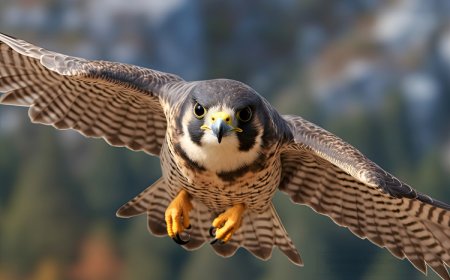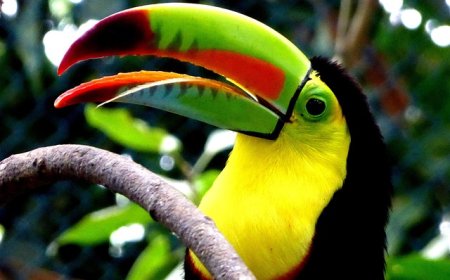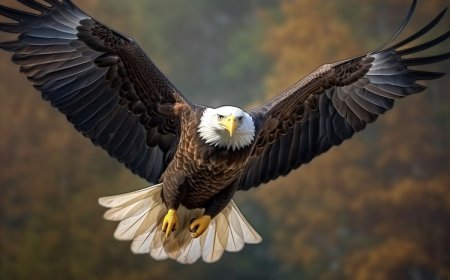Osprey Facts for Kids: Fishing Skills, Nesting, and Adaptations
Explore the osprey in this kid-friendly guide. Learn about its amazing fishing skills, unique feet and nesting habits
🦅🐟 Osprey: The Master Fisher of the Skies
The osprey is a large bird of prey known for its incredible ability to catch fish right out of the water. Sometimes called the fish hawk or sea hawk, this bird can be found almost anywhere there are lakes, rivers, or coastlines with plenty of fish. With its sharp talons, keen eyesight, and dramatic dives, the osprey is one of the most fascinating raptors in the world.
🧬 Scientific Classification
Ospreys are unique because they are the only living member of their family, Pandionidae.
Classification:
Kingdom: Animalia
Phylum: Chordata
Class: Aves
Order: Accipitriformes
Family: Pandionidae
Genus: Pandion
Species: Pandion haliaetus
The species name haliaetus comes from Greek and means “sea eagle.”
🦅 Description and Adaptations
Ospreys are large, powerful raptors with long wings and striking markings.
Size and Features:
Length: 20–26 inches (50–66 cm)
Wingspan: 5–6 feet (1.5–1.8 m)
Weight: 2–4.5 pounds (0.9–2 kg)
Adults have dark brown backs, white bellies, and white heads with a bold dark eye stripe.
Adaptations for Fishing:
Reversible outer toes—they can rotate one toe backward to grasp slippery fish with two toes in front and two behind.
Rough spicules (tiny spikes) on the soles of their feet to hold fish tightly.
Special nostrils that close to keep out water when they dive.
Dense, oily feathers that repel water.
Excellent eyesight—they can spot fish from over 100 feet in the air.
🌍 Habitat and Range
Ospreys live near almost any body of water with abundant fish.
Habitats Include:
Lakes and reservoirs
Rivers and wetlands
Coastal bays and estuaries
Range:
Found on every continent except Antarctica.
In North America, they breed from Alaska and Canada down to Florida and Mexico.
Many migrate to Central and South America for the winter.
🐟 Diet and Hunting Behaviors
Ospreys are specialist fish hunters, and fish make up about 99% of their diet.
Hunting Style:
Hover over water, then dive feet-first to grab fish.
Carry fish head-first to reduce wind resistance.
Shake off water mid-flight like a dog shaking its fur.
They typically hunt in the early morning or late afternoon when fish are closest to the surface.
🪺 Reproduction and Nesting
Ospreys are monogamous and often use the same nest for many years.
Nesting Facts:
Nests are called platforms and are built high up on trees, poles, or platforms provided by people.
Made of sticks and lined with moss, seaweed, and grass.
The female lays 2–4 eggs in spring.
Both parents incubate the eggs for about 35–43 days.
Chicks fledge about 8 weeks after hatching.
🛡️ Conservation Status
Ospreys were once threatened by DDT, a pesticide that made their eggshells thin and fragile. After DDT was banned in the 1970s, their numbers recovered dramatically.
Today, ospreys are listed as Least Concern. They are protected by laws like the Migratory Bird Treaty Act.
✨ Fun Facts About Ospreys
Ospreys can dive into the water from heights up to 100 feet.
They are sometimes called “fish eagles.”
Osprey chicks often fight to see who gets fed first.
Their nests can be over 10 feet deep after years of use.
Ospreys have been used as symbols on stamps and coins around the world.
📝 Kid-Friendly Summary
Ospreys are large birds that live near water and eat almost only fish. They have special feet and sharp eyesight to catch slippery fish. Ospreys build big nests high off the ground and often use the same nest every year. Once in danger from pesticides, they are now doing well thanks to conservation.
🧠 Vocabulary Words
Word Definition
Raptor A bird of prey with sharp talons and a hooked beak.
Monogamous Having one mate for life.
Spicules Tiny spikes on the feet for gripping fish.
Platform A flat nest built by ospreys.
Incubate Keeping eggs warm until they hatch.
Fledge When young birds leave the nest and learn to fly.
Estuary Where a river meets the sea.
Adaptation A special feature that helps an animal survive.
Migratory Moving to another region for part of the year.
Conservation The protection of animals and nature.
🎲 Interactive Quiz
Multiple Choice Questions
What do ospreys mainly eat?
A) Insects
B) Fish
C) Mammals
D) Berries
What is special about their feet?
A) They have webbed toes.
B) They are flat and smooth.
C) They have rough spicules and reversible toes.
D) They have three toes only.
Where do ospreys usually build nests?
A) Underground
B) On water
C) High on trees or poles
D) Inside caves
What caused osprey populations to decline in the past?
A) Too much fishing
B) DDT pesticide
C) Cold weather
D) Noise pollution
What is a baby osprey called?
A) Owlet
B) Chick
C) Hatchling
D) Fledgling
True or False Questions
Ospreys are found on every continent except Antarctica.
True / False
Ospreys eat mostly mammals.
True / False
Ospreys have special nostrils that close when they dive.
True / False
They are still endangered today.
True / False
Ospreys can rotate one toe backward to hold fish.
True / False
Answer Key:
1–B, 2–C, 3–C, 4–B, 5–B, 6–True, 7–False, 8–True, 9–False, 10–True
🎨 Visual Aids Suggestions
Photo of an osprey carrying a fish
Diagram showing osprey foot adaptations
Map of global osprey range
Illustration of nest platform
Chart comparing osprey size to other raptors
🔍 High-Ranking SEO Title, Description, Keywords, and Slug
✅ SEO Title:
Osprey Facts for Kids: Fishing Skills, Nesting, and Adaptations
✅ SEO Description:
Explore the osprey in this kid-friendly guide. Learn about its amazing fishing skills, unique feet, nesting habits, and recovery from pesticides.
✅ SEO Keywords:
osprey facts for kids, osprey diet, osprey nesting, osprey adaptations, osprey fishing, osprey habitat, osprey conservation, osprey size, osprey talons
✅ SEO Slug:
osprey-facts-fishing-nesting




















































